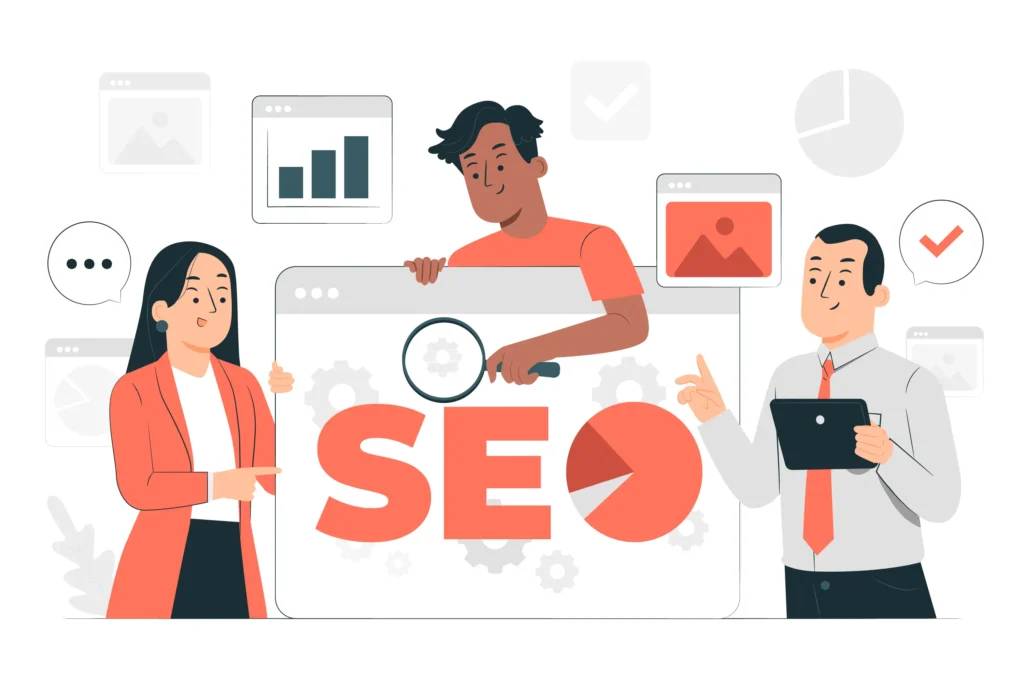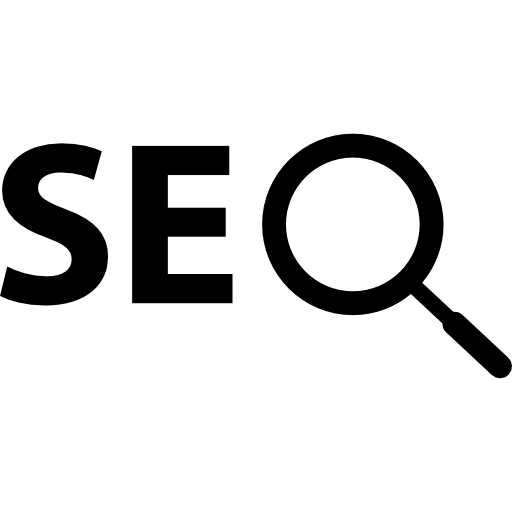Boost Your Website’s Visibility With Proven SEO Techniques
Do you want to boost the exposure and traffic to your website? SEO, or search engine optimization, is an essential component of digital marketing that may help your website rank higher in search engine results and attract more visitors. In this blog article, we’ll look at numerous SEO Techniques and strategies you can use to increase the visibility of your website and generate more visitors.

We’ll go through on-page SEO, off-page SEO, technical SEO, local SEO, and strategies for increasing traffic via content marketing and paid to advertise. Whether a novice or a seasoned marketer, you’ll find useful ideas and tactics to help you boost your website’s search engine ranks and attract more visitors. So let’s get started and discover how to improve the performance of your website.
What is SEO?
Search engine optimization (SEO) is the practice of improving a website so that it ranks higher in search engine results pages (SERPs) and receives more organic traffic. SEO is making technical and content modifications to a website in order to make it more appealing to search engines. This includes optimizing the content, structure, and code of the website, as well as constructing high-quality backlinks from other websites.

SEO is vital for website exposure because it increases the possibility that customers looking for the products or services you provide will find your website. Your website will appear at the top of search engine results pages (SERPs), where it is more likely to be noticed and clicked on by people. This can result in an increase in organic visitors and, as a result, more sales and money for your company. Local companies benefit from SEO as well, since it may help them boost their presence in local search results, drawing more clients from their immediate region.
What are the types of SEO?
There are various methods of SEO that may be utilized to increase the visibility and rating of a website in search engine results. Here is a rundown of the many methods of SEO:

- On-page SEO refers to the optimization of individual pages and content on a website. On-page SEO includes improving the title tags, meta descriptions, headers, and website content for specific keywords. It also ensures that the website is well-structured, user-friendly, and mobile-friendly.
- Off-page SEO is the optimization of a website’s backlink profile, or the connections pointing to the website from other websites. Building high-quality backlinks from reputable websites and enhancing the website’s visibility on social media and other platforms are all part of off-page SEO.
- Technical SEO refers to optimizing a website’s technical elements, such as speed, security, and crawlability. Technical SEO includes ensuring that a website is quick and easy to navigate and secure and easily indexed by search engines.
- Local SEO: This sort of SEO focuses solely on increasing a website’s presence in local search results. Local SEO entails optimizing a website for particular local keywords as well as making certain that it is featured in local directories and citation sources.
On-Page SEO
On-page SEO is improving a website’s individual pages and content in order to increase its exposure and ranking in search engine results. Here’s a more extensive breakdown of the primary components of on-page SEO:

- Keyword research and optimization
- Keyword research is the process of identifying and evaluating the keywords that consumers use while searching for the products or services that you provide. You may improve your website’s content and meta tags for those keywords by choosing the correct keywords to target. This increases the probability that your website will rank highly for those search searches.
- Meta tags and titles
- Meta tags are bits of code that supply search engines with information about a web page. The title tag is the most significant meta tag since it shows in search engine results as a clickable link. It is critical to include your desired keywords in the title tag and other meta tags since this helps search engines understand what your website is about.
- Content optimization
- One of the most significant aspects of on-page SEO is optimizing your website’s content for certain keywords. This entails organically including the keywords in the body of your material, as well as in headers and subheadings. It’s also critical to make sure your content is high-quality, relevant, and useful, since this may boost its ranking and increase its likelihood of being shared on social media and other platforms.
- Internal linking
- This is the technique of connecting to other pages within your own website. This can assist to enhance your website’s navigation and structure, as well as communicate to search engines which pages are most important. You may also aid by utilizing descriptive and relevant anchor text for your internal links.
Off-Page SEO
Off-page SEO is improving a website’s backlink profile, or the connections pointing to it from other websites. Here’s a more extensive breakdown of the primary components of off-page SEO:

- Link building
- The practice of gaining high-quality backlinks from other websites is known as link building. These links work as “votes of confidence” for your website, informing search engines that it is reliable and authoritative. As a consequence, getting backlinks from high-quality websites might help your website rank higher in search engine results. There are several strategies for acquiring backlinks, including guest blogging, broken link building, and generating quality information that other websites will want to connect to.
- Social media marketing
- Social networking networks may be an effective strategy for off-page SEO by driving visitors to your website and increasing its visibility. You may engage your audience and encourage them to share your material by providing fascinating and relevant information on social media on a regular basis, which can lead to more backlinks and increased search engine results.
- Local citations and directory listings
- Local citations are instances of your company’s name, address, and phone number being mentioned on other websites. These citations increase your exposure in local search results and communicate to search engines that your company is a reputable, local organization. To increase your local SEO, make sure your business is featured in local directories and citation sources such as Google My Business and Yelp.
Technical SEO
Technical SEO is the process of improving a website’s visibility and ranking in search engine results by optimizing its technical features. Here’s a more extensive breakdown of the primary components of technical SEO:

- Website speed and performance
- Websites that load quickly and operate efficiently are preferred by search engines because they give a better user experience for searchers. As a result, increasing the speed and performance of your website can have a favorable influence on its ranking in search engine results. Large graphics, inefficient coding, and a lack of caching are just a few of the things that might slow down a website’s performance. You may increase the speed and performance of your website by optimizing these aspects and utilizing tools like Google PageSpeed Insights.
- Mobile Optimization
- With a rising number of people accessing the internet via mobile devices, it’s critical that your website be mobile-friendly. This includes making sure your website is responsive, which means it changes to the size of the device being viewed and loads swiftly on mobile. You may increase your website’s ranking in mobile search results and give a better user experience for mobile users by optimizing it for mobile.
- Indexing and crawlability
- Indexing is the process of adding a website’s pages to a search engine’s database in order for them to appear in search results. The capacity of a search engine to access and crawl the pages of a website is referred to as crawlability. Ensure that your website is properly indexed and crawlable since this helps search engines to discover and comprehend the content of your website. Broken links, duplicate content, and poorly-structured URLs are examples of technical concerns that might impact a website’s crawlability. By fixing these issues and utilizing tools such as Google Search Console, you may enhance the crawlability and indexing of your website.
Local SEO
Local SEO is a subset of SEO that focuses on increasing a website’s presence in local search results. Here’s a more extensive breakdown of the primary components of local SEO:

- Importance of local SEO for small businesses
- Local SEO is especially crucial for small businesses that rely on local clients since it helps them appear more prominently in local search results. Small companies may attract more clients from their local region by optimizing their website for local keywords and ensuring that their firm is featured in local directories and reference sources.
- Google My Business listing
- Google My Business is a free application that helps businesses manage their online presence on Google, including search results and Google Maps. Businesses may increase their exposure in local search results by creating and validating a Google My Business page, as well as providing crucial information to potential consumers such as their location, hours of operation, and contact information.
- Local citations and directory listings
- Local citations are instances of a company’s name, address, and phone number being mentioned on other websites. These citations serve to increase a company’s exposure in local search results and signal to search engines that the company is a real, local organization. To boost their local SEO, businesses should ensure that they are listed in local directories and citation sources such as Yelp and Yellow Pages.
SEO Techniques for Increasing Traffic
After you’ve adopted fundamental SEO approaches to improve your website’s exposure and rating, you may want to examine further strategies to boost traffic. In this part, we’ll look at how to increase the number of visits to your website through content marketing, social media, email marketing, and paid advertising. By using these tactics and constantly testing and tweaking your approach, you may boost traffic to your website and, as a result, sales and money. So let’s get started and learn how to use efficient SEO methods to increase the traffic to your website!

- Identifying target audience and creating a buyer persona
- To effectively promote your website and attract more visitors, you must first identify who your target audience is. This involves determining who your ideal consumers are, their requirements and aspirations, and how they find your products or services. You may aid this process by developing a buyer persona, which is a fictitious portrayal of your ideal client based on actual data and research. You may design more focused and effective marketing efforts by researching your target population and creating a buyer persona.
- Creating a content marketing strategy
- The practice of developing and delivering valuable, relevant, and consistent material in order to attract and keep a clearly defined audience is known as content marketing. A solid content marketing plan may help your website attract more users while also improving its exposure and position in search engine results. It is critical to determine your target audience and the themes that will be most relevant and intriguing to them when developing a content marketing plan. You should also examine the various sorts of content you will develop (for example, blog posts, videos, podcasts, and infographics) as well as the distribution platforms you will employ (e.g. social media, email, guest blogging).
- Using social media and email marketing
- Social media and email marketing may be extremely effective methods of generating visitors to your website. You may increase the number of visitors to your website by aggressively marketing your content and connecting with your audience on social media channels. Email marketing may also be used to drive visitors as well as retain and nurture leads. You may urge your subscribers to visit your website and take action by developing an email list and delivering targeted and relevant emails to them.
- Utilizing paid advertising (Google Ads, social media ads, etc.)
- Paid advertising, such as Google Advertisements and social network ads, may be a quick and efficient approach to increasing visitors to your website. You may target certain keywords, demographics, and areas with sponsored advertising and only pay when someone clicks on your ad. You may boost the likelihood of getting quality traffic to your website by properly planning and tracking your paid advertising efforts.
SEO Techniques Tips and Tricks
Now that you have a strong grasp of the many types of SEO and traffic-increasing tactics, it’s time to learn some tips and tricks to assist you in further increasing the visibility and ranking of your website. In this part, we’ll provide some practical SEO ideas that you can put into action right away to increase your SEO efforts. You’ll find a number of useful techniques to boost your website’s search engine performance, ranging from frequently renewing your content to leveraging long-tail keywords and using analytics and tracking tools. So, let us get started and learn some tried-and-true SEO strategies and methods!

- Regularly updating and refreshing website content
- Regularly renewing and upgrading your website’s content is one of the keys to good SEO. You may attract more visitors, boost your website’s exposure in search results, and show search engines that your website is current and relevant by adding new material to it. It is critical to maintaining your website’s material fresh and up to date, as well as to delete any old or obsolete content that is no longer relevant.
- Utilizing long-tail keywords
- Long-tail keywords are more particular and less competitive than short-tail keywords, and they may be an effective approach to drive focused visitors to your site. You may increase your website’s exposure for more specialized search queries and attract users who are farther along in the purchasing process by using long-tail keywords in its content.
- Using analytics and tracking tools
- Analytics and monitoring tools, such as Google Analytics, may assist you in understanding how users interact with your website and what does and does not work in your SEO efforts. By examining your analytics data on a regular basis, you may find areas for development and adjust your website accordingly.
- Keeping up with industry trends and algorithm updates
- SEO is a constantly changing sector, and staying current with industry trends and algorithm adjustments is critical to being competitive. You can remain up to date on the newest advancements in the SEO field by following SEO blogs and industry professionals. It is also critical to assess your website’s performance on a regular basis and make any required modifications to ensure that it is optimized for the most recent algorithms and best practices.

Conclusion
In the conclusion of an SEO post, it is critical to recap the key issues that have been mentioned and offer some closing remarks on the subject. Here are some aspects you might include in the conclusion of an SEO post:
- Remind readers of the importance of SEO in increasing a website’s exposure and traffic. Highlight the advantages of SEO, such as improved sales and revenue, and encourage readers to put the tactics and strategies outlined in the piece into action.
- Encourage readers to act by applying the SEO tactics and strategies outlined in the essay. In order to stay competitive and obtain the greatest results, emphasize the necessity of continually assessing and improving their SEO efforts.
- Suggest that readers continue their SEO education by looking for additional resources including industry blogs, online courses, and webinars. In order to stay competitive and obtain the greatest outcomes, emphasize the necessity of being up to speed with industry trends and algorithm upgrades.
FAQ
What is Ahrefs?
Ahrefs is a set of SEO tools that helps users increase the visibility and ranking of their websites in search engine results. Ahrefs’ products include keyword research, backlink analysis, competition analysis, and website auditing. SEO experts and digital marketers use Ahrefs to uncover keyword possibilities, examine backlink profiles of their own and rivals’ websites, and detect technical SEO issues that may be harming a website’s ranking. In addition, Ahrefs offers a variety of instructional materials, such as blog articles and webinars, to assist users in improving their SEO knowledge and abilities.
What is Semrush?
Semrush is a digital marketing tool package that assists customers in improving their online presence and performance. Semrush’s capabilities include keyword research, SEO, paid advertising, social media, content marketing, and market research. Digital marketers and SEO experts use Semrush to uncover keyword opportunities, monitor their website’s presence and position in search results, and do competitive analysis. Semrush also offers a variety of training tools, such as webinars and ebooks, to assist users in expanding their digital marketing knowledge and abilities.
What is Digital Marketing?

The use of electronic channels and digital technology to advertise and sell items and services is known as digital marketing. It includes actions such as search engine optimization (SEO), content marketing, social media marketing, email marketing, pay-per-click (PPC) advertising, and affiliate marketing. Digital marketing’s purpose is to reach and engage customers where they spend the majority of their time: online. Businesses can contact and convert potential consumers, as well as analyze the performance of their marketing efforts, by combining digital marketing methods with monitoring systems.
How to increase website traffic?

– Optimizing your website for search engines: You may attract more organic (non-paid) visitors to your website by boosting its visibility and ranking in search engine results. Search engine optimization (SEO) tactics such as keyword research and optimization, content production, and backlink building can help with this.
– Social media engagement: Social media platforms may be a great tool for increasing visitors to your website. You may attract more visits to your website by constantly providing fascinating and relevant information on social media and connecting with your fans.
– Paid advertising, such as Google Advertisements and social network ads, may be a quick and efficient way to generate visitors to your website. You may attract qualified visitors to your website by targeting certain keywords and demographics.
– Providing valuable and shareable content: You may attract more people to your website and boost its exposure in search results by creating useful and shareable content. When developing content, keep your target audience’s wants and interests in mind, and optimize it for search engines.
– Obtaining backlinks from other respectable websites: Obtaining backlinks from other reputable websites will increase the exposure and ranking of your website in search results. By establishing ties with other websites and developing useful resources that other websites will desire
How to do SEO?

Here are the procedures to do in order to optimize your website for search engines:
– Determine the keywords and phrases that your target audience is searching for. This approach can be aided by tools such as Google’s Keyword Planner or Ahrefs.
– Improve the text and meta tags on your website: Use the keywords you’ve found in your website’s content and meta tags, including title tags and meta descriptions. Use keywords in a natural and user-friendly manner, and generate high-quality, engaging content that adds value to your audience.
– Build backlinks: Obtain backlinks from other respectable websites, since they can assist to boost the visibility and rating of your website in search results. There are several methods for obtaining backlinks, including guest blogging, broken link building, and generating quality information that other websites will want to connect to.
– Track and evaluate your results: Use tools like Google Analytics and Ahrefs to monitor the traffic and performance of your website in search results. Analyze the data to determine what is and isn’t working, and make changes to your SEO approach as needed.
– Continuously improve and update your SEO: SEO is a continuous process, and it’s critical to examine and update your website’s SEO on a frequent basis if you want to stay competitive and obtain the greatest results. Keep up with industry trends and algorithm upgrades, and experiment and optimize your website on a regular basis to boost its exposure and rating.
Is SEO effective?
SEO, or search engine optimization, is the activity of improving a website’s or online content’s ranking on search engine results pages (SERPs). When done correctly, SEO may be an efficient technique to boost a website’s exposure and traffic.
The quality and relevancy of the content, the structure of the website, and the usage of keywords are all aspects that might impact SEO performance. It’s also vital to remember that SEO tactics and algorithms are always changing, so what works now might not work tomorrow.
Overall, SEO may be a beneficial tool for increasing traffic and awareness, but it is critical to handle it strategically and long term.
Can SEO help your business?
Yes, SEO may benefit your business in a variety of ways. Some of the advantages of SEO include:
1- Increased traffic: You may increase the number of visitors to your website by raising its rating in search engine results pages.
2- Cost-effectiveness: Because it allows you to target certain keywords and demographics without paying for advertising, SEO may be a cost-effective approach to attract visitors to your website.
3- Increased credibility: A high ranking in search results may lend credibility to your company and enhance confidence in your brand.
4- Improved user experience: By optimizing your website for search engines, you can also enhance the user experience for your site’s visitors by making it simpler for them to discover the information they need.
5- Better ROI: By bringing more focused traffic to your website, you may be able to produce more leads and sales, resulting in a higher ROI for your marketing efforts.
It is vital to highlight that SEO should be viewed as a long-term approach, with effects that may not be obvious right away. It is also only one component of a bigger marketing plan that should be examined alongside other methods such as content marketing, social media, and paid advertising.
Can SEO keywords be phrases?
Yes, SEO keywords might be phrases as opposed to single words. Long-tail keywords, which are longer and more specialized phrases, are frequently more successful than single words. Long-tail keywords are less competitive and more focused, making it simpler to rank them in search results.
Instead of using the single keyword “dog,” for example, you may utilize the long-tail keyword “best dog food for tiny breeds.” This keyword phrase is more particular, and it is more likely to be used by those who are actively looking for information on the subject.
It’s critical to incorporate single-word and long-tail keywords in your SEO plan since they may assist you to attract different sorts of search visitors. Keyword research is also recommended to evaluate which keywords and phrases are most relevant and popular for your business. This can assist you in developing content that is optimized for the keywords that your target audience is looking for.
Can you describe some SEO best practices or techniques you have used lately?
Here are a few best practices and techniques that are commonly used in SEO:
1- Conduct keyword research: Identify the keywords and phrases that are relevant to your business and that your target audience is searching for.
2- Optimize your website’s content and structure: Use the identified keywords in your website’s content and meta tags, and make sure that your website is well-organized and easy to navigate.
3- Use header tags: Use header tags (H1, H2, etc.) to structure your content and make it easier for search engines to understand the hierarchy of your information.
4- Use alt tags: Use alt tags to describe images on your website, as search engines are unable to interpret images and rely on alt tags to understand the content of your site.
5- Create high-quality content: Provide valuable, informative, and engaging content that addresses the needs and interests of your target audience.
6- Acquire high-quality backlinks: Backlinks from other reputable websites can help to improve the ranking of your website in search results.
7- Use social media: Use social media platforms to promote your website and engage with your target audience.
8- Monitor and analyze your results: Use tools such as Google Analytics to track the traffic to your website and analyze your search engine rankings. This can help you to identify areas for improvement and optimize your SEO strategy.
Can you do SEO yourself?
Yes, you can perform SEO yourself, and many firms prefer to manage their own SEO operations. However, bear in mind that SEO may be a time-consuming and difficult process that necessitates a thorough grasp of how search engines function and what elements influence ranking.







